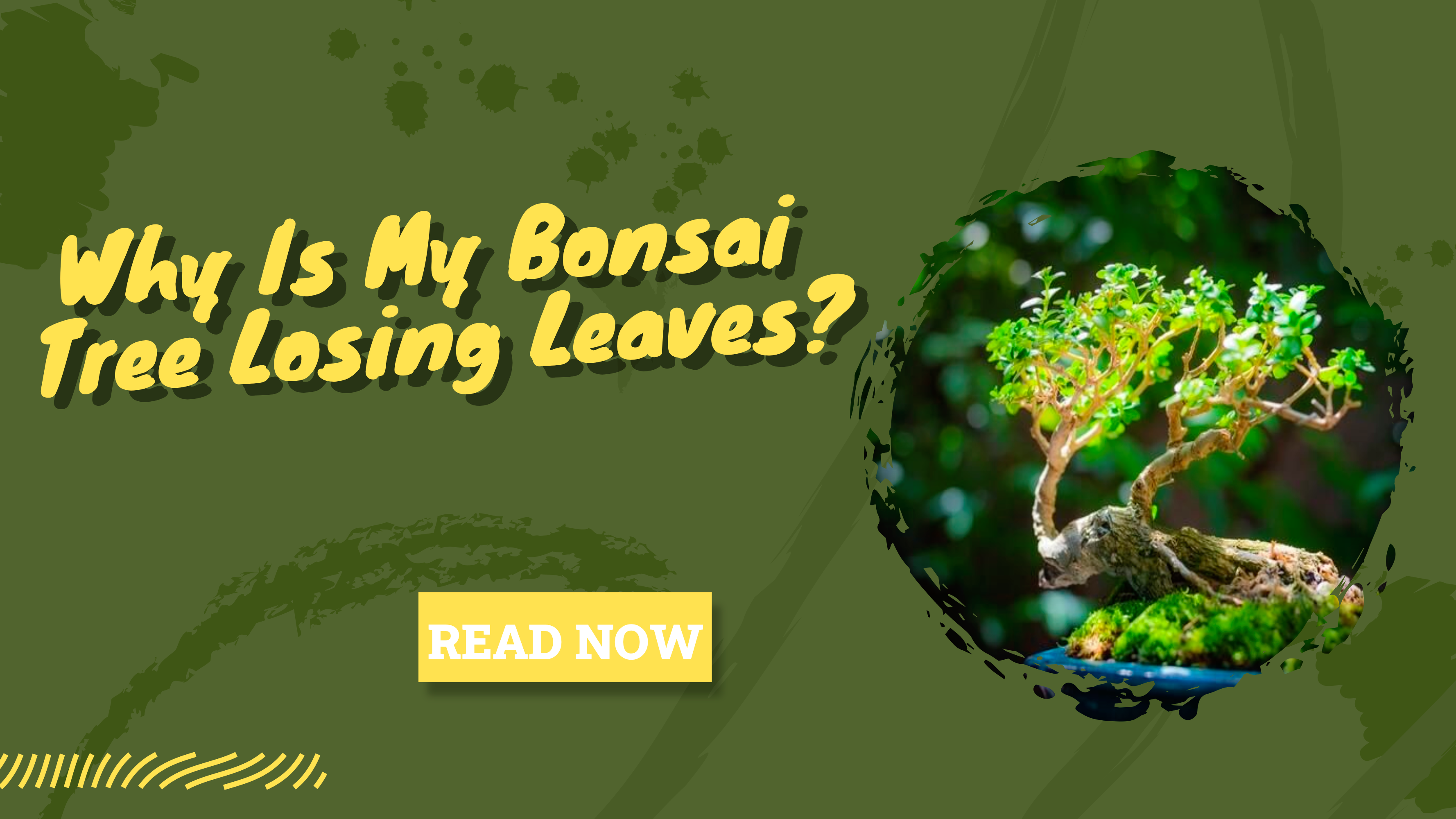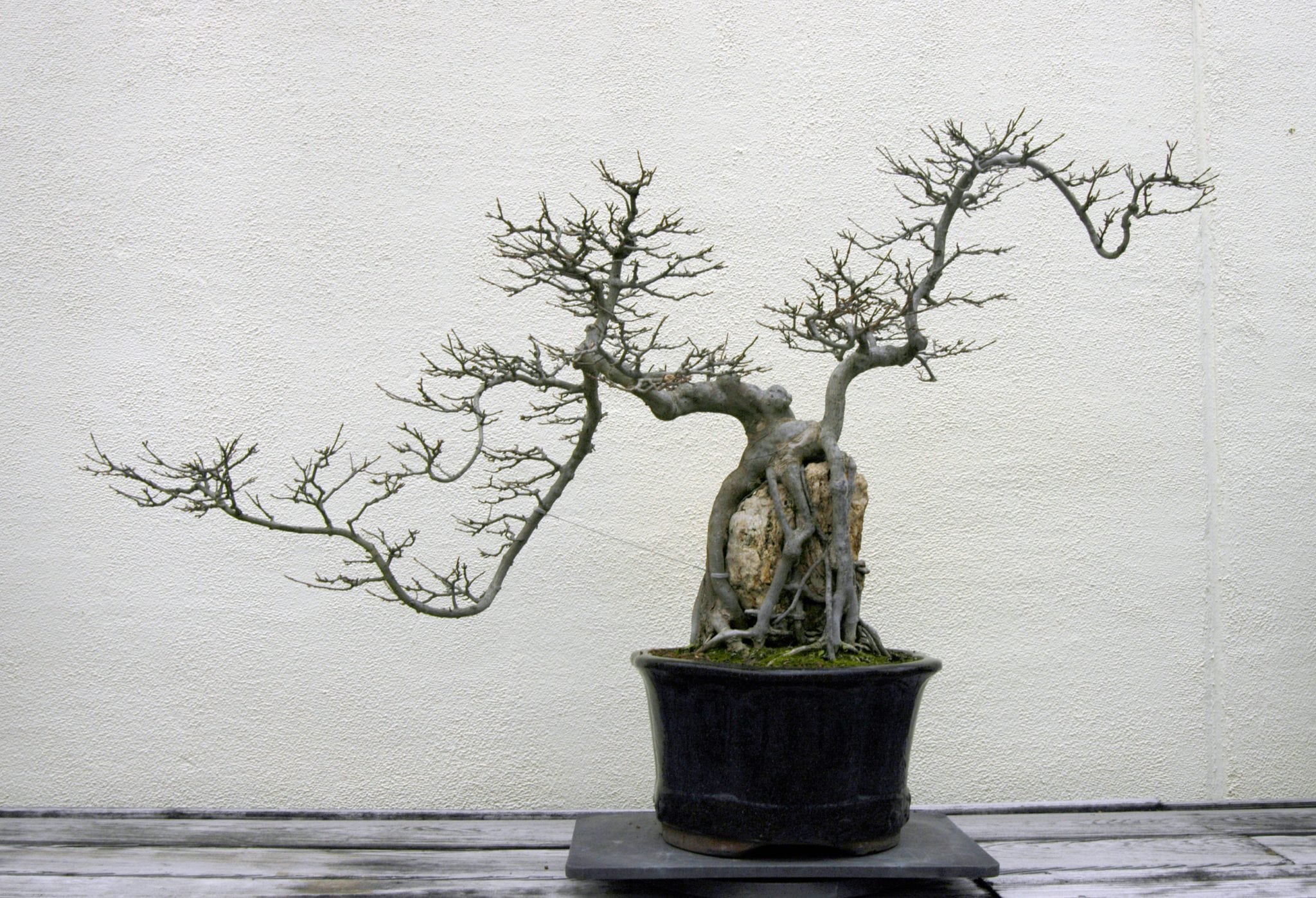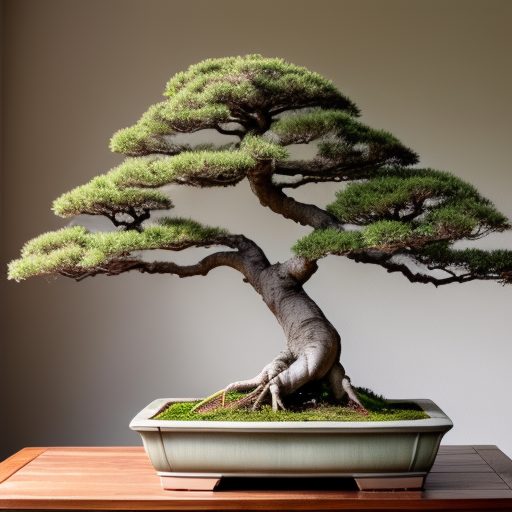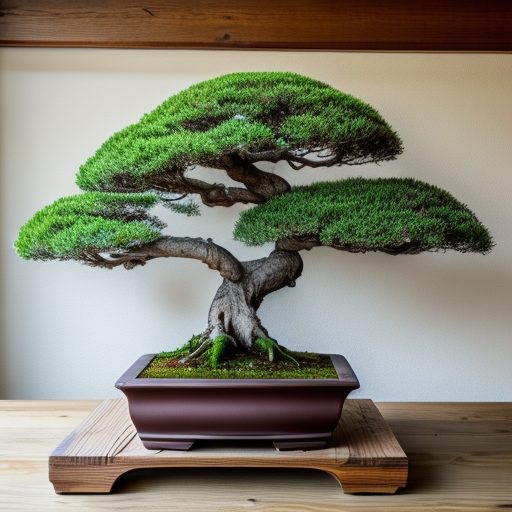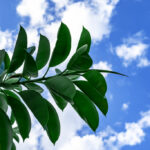HousePlantJoy is supported by our audience. When you purchase through one of our links, we may earn a small affiliate commission. As an Amazon Associate I earn from qualifying purchases. Your cost is not affected.
==================
Bonsai tree losing leaves can indicate several issues. Some causes include over or under-watering, lack of sunlight, or pest infestations. Diagnosing the problem and care to prevent further leaf loss is important.
Bonsai trees are rare and distinctive plants that need specific attention to flourish. When you have a bonsai tree, you could get worried if you see that its leaves are dropping off. The loss of leaves on bonsai trees is a typical issue with many potential causes. The health and attractiveness of your bonsai tree depend on your knowledge. Know the reasons for leaf drop and how to prevent it.
The first step in solving the problem of leaf drop is understanding what triggers it. Bonsai trees often lose their leaves because of a lack of water. Under or overwatering can cause bonsai trees to lose their leaves. Thus, watering them is essential. It is because nutrient deficiency or excessive fertilizer can cause leaf loss. If bonsai trees lack the proper nutrients, foliage loss may happen.
Insufficient lighting might also result in bonsai leaf loss. To avoid leaf loss, provide your bonsai tree with the correct quantity of light each day. The result of leaf loss is sometimes pests and diseases. It’s common for spider mites, scale insects, and mealybugs to attack bonsai trees. Fungal diseases like root rot and leaf spot can also bring on leaf drop.
You must understand what causes leaf drop and how to prevent it if you want to keep your bonsai tree healthy. First, the success of your bonsai tree relies on your ability to water it. It’s crucial to keep a regular watering plan and avoid over- or under-watering your tree. You can remedy its nutrient imbalances. Through appropriate fertilizers and adjustments to fertilization regimens, you can achieve it. Whether from the sun or a lamp, ensuring the tree has enough light to thrive is essential. Last, stopping future leaf drops requires prompt diagnosis. You can also treat to avoid pests or illnesses.
Insufficient Watering
Insufficient watering is a leading cause of bonsai tree leaf drop. Overwatering or underwatering a bonsai tree can cause its leaves to wilt and fall off. Root rot, brought on by overwatering, can destroy your bonsai tree from the ground up. Underwatering might result in dry soil, which can induce leaf drop. Following a regular watering plan, ensure your tree gets the correct quantity.
Overfertilization
Leaf drops may also be a sign of overfertilization or nutrient shortage. Bonsai trees need a specific nutritional balance. Any deviation from that can result in a leaf drop. For example, root burn, brought on by over-fertilization. It can harm the plant’s foundation and lead to a decline in leaf production. , nutrient deficits can weaken the tree to the point where it drops its leaves. Learning about your bonsai tree’s particular nutritional needs would be best. Select fertilizers that meet them. It will ensure that it receives the ideal balance of nutrients.
Improper Lightning Position
Bonsai trees can also lose leaves due to improper lightning position. To flourish, bonsai trees need a particular quantity of light per day. Otherwise, the tree’s leaves may wilt and fall off. Also, your bonsai tree may become frail and prone to pests and illnesses if it needs more light. Finally, inadequate lighting can cause stunted development and distorted leaves. It can result in leaf drop.
Pests and Diseases
Pests and diseases can also bring on leaf drops in bonsai trees. It’s common for spider mites, scale insects, and mealybugs to attack bonsai trees. Damage from these pests can result in leaf drop. Fungal diseases like root rot and leaf spot can also bring on leaf drops. You must identify the problem early before it harms your bonsai tree irreversible. Some diseases might be challenging to treat.
A bonsai tree may shed leaves as part of its expected life cycle. For example, it is normal for bonsai trees to lose leaves after stressed factors. Some stressors like repotting or sudden shifts in temperature or humidity. But you should look into the source immediately if you notice a dramatic increase in leaf drops.
Remedies for a Bonsai Tree Losing Leaves
You can attempt various solutions if your bonsai tree starts dropping leaves. Investigate the cause of the leaf drop and treat the underlying problem. It can help your bonsai tree recover its health and vitality.
Proper Watering
Bonsai trees need careful attention to their watering needs to thrive. Watering your bonsai tree can help prevent the leaf drop from too little or too much water. The size of the container, the weather, and the type of tree cultivated are crucial. It all affects how often a bonsai needs watering. Different bonsai species, sized containers, and environmental factors will have different watering requirements. If the soil around your bonsai tree seems dry when you touch it, you should water it. It would be best if you took care when watering the soil around the tree so that no water gets on the leaves or trunk. Don’t overwater your bonsai tree, either. As a result, root rot and other issues may develop.
Fertilization
Changing the time of fertilization is helpful for Bonsai that are shedding leaves. Also, you can change the fertilization schedule or the type of fertilizer used. Do this if you suspect nutritional deficits or over-fertilization for your tree. Bonsai trees need nitrogen, phosphorus, potassium, and trace elements like magnesium and calcium. Learn what your bonsai tree needs in nutrients and alter your fertilizer program.
Proper Light Location
Giving the bonsai tree enough light is another effective treatment for leaf drops. Inadequate lighting can induce leaf drops on bonsai trees. It is important to ensure they get the right light daily. Your bonsai tree may become frail and prone to pests and illnesses if it needs more light. Your bonsai tree’s daily light needs will vary depending on the species you’ve chosen to cultivate. Thus, it is crucial to determine how much light your bonsai tree needs and give it that light.
Use Pesticides
With proper care, bonsai trees can keep their leaves. Thus, diagnosing and treating pests and diseases is crucial. Common pests that plague bonsai trees include spider mites, scale insects, and mealybugs.
Because of the harm these insects have caused, the leaves may wilt and fall off. Fungal infections like root rot or leaf spot can also cause leaf drops. You must diagnose the issue if you suspect pests or diseases are affecting your bonsai tree. Take corrective action immediately.
Some options are repotting, using insecticides or fungicides, and cutting off diseased branches.
Tips for Preventing Bonsai Tree Leaf Loss
The key to keeping your bonsai tree healthy and vibrant is preventing leaf drop. Keep your bonsai tree looking its best by following these guidelines to reduce leaf drop:
1. The health of a bonsai tree depends on adhering to a regular watering and fertilizing schedule. Thus, you should adjust and watch the soil moisture levels and watering treatment. Also, to keep your bonsai tree healthy and avoid stunting from a lack of nutrients, fertilize it.
2. Bonsai trees do best in particular lighting circumstances, so maintain them that way. Wide bonsai tree varieties have different sun exposure needs. Likewise, the bonsai tree in your care has unique lighting needs; you should meet those needs as best you can.
3. Inspect your bonsai tree often for pests and diseases which cause leaf drop. If you notice any spider mites or scale insects on your tree, take immediate measures to cut them. Watch for fungal diseases like leaf spots and root rot. This can take appropriate action if necessary.
4. If you want your bonsai tree to thrive, prune it. Pruning helps prevent leaf loss by encouraging new growth. It keeps the branches from getting overcrowded.
5. Maintain a healthy bonsai tree. Warding off root rot requires regular reporting of this issue. When repotting, you can also cut out any sick pieces of root.
Leaf Me Not: Troubleshooting Your Bonsai Tree’s Leaf Loss
Always remember that prevention is preferable to treatment. Keeping your bonsai tree in optimal lighting and checking for pests and diseases is a list to do. Monitoring its water and nutrient levels is critical. It can all help keep its leaves from falling off in the first place.
Proper maintenance is important to keep your bonsai tree looking great. It can also live for as long as possible. Bonsai trees give any room or yard a unique touch but need special care to flourish. The Bonsai tree will reward you with years of aesthetic and meditative pleasure.
In conclusion, it is crucial to understand what triggers leaf drops on bonsai trees. You can keep your bonsai tree looking lush and full of leaves by giving it the attention and care it needs. Invest the time into researching your bonsai tree’s requirements. It can provide the best care possible. A beautiful and flourishing bonsai tree results from your labor. It brings you years of serenity and satisfaction.
Discover our top-recommended products for bonsai care and elevate your gardening experience. Find the best tools and essentials to nurture your bonsai to perfection. #ads #commissionsearned
In this video, I share some quick fixes to your ficus bonsai if it is shedding leaves.
Video Credit: @WeareTheBonsaiSupply
Once more, dive into the world of bonsai care with our carefully curated selection. Explore the finest tools and essentials to nurture your bonsai to its full potential and take your gardening experience to the next level. #ads #commissionsearned
Be Proactive After Seeing Bonsai Tree Losing Leaves
If you’re worried about your bonsai tree losing leaves, don’t fret! It’s a common issue that can be easily fixed with the right care and attention. And guess what? Our friends at Houseplant Joy have got you covered with their latest blog post on the common causes and solutions for this problem.
By giving your bonsai tree some TLC and learning about the common culprits behind leaf loss such as over or underwatering, inadequate lighting, pests, and disease, you’ll be able to take the necessary steps to help your plant thrive again.
So, if you want to ensure that your bonsai tree continues to bring beauty and joy to your space, be sure to check out the Houseplant Joy blog for all the tips and tricks you need to know. Remember, with a little love and care, your bonsai tree can flourish for years to come!
Frequently Asked Questions
Why are my bonsai tree's leaves fading away?
Several factors include water shortage, overwatering, insufficient lighting, pests, and illnesses. These can cause bonsai trees to lose their leaves. Thus, it’s critical to determine the reason for the leaf loss. You can put the necessary corrective action in place.
Can bonsai trees with excessive fertilizer lose their leaves?
Over-fertilization is a fundamental cause of leaf drop in bonsai plants. Thus, adhering to the fertilizing schedule suggested for your specific bonsai tree.
How often should I water my Bonsai?
The watering requirements of your bonsai tree will vary depending on its species. It would be best if you kept it in good condition. Yet, in most circumstances, you should begin watering your Bonsai when the soil seems dry.
How can I keep diseases and pests away from my bonsai tree?
If you have a bonsai tree, you should inspect it for signs of pests and illnesses and then take action to cut them. You can avoid pests and diseases if your plants receive appropriate needs. Some of the important requirements are sunlight, water, and fertilizer.
How should you prune your Bonsai?
The frequency of pruning of the Bonsai tree depends on its species and desired shape. Removing dead or damaged branches and shaping the tree are important. Preserving its ideal form should be the primary goal of pruning. It is often done throughout the growing season.
How should you prune your Bonsai?
The frequency of pruning of the Bonsai tree depends on its species and desired shape. Removing dead or damaged branches and shaping the tree are important. Preserving its ideal form should be the primary goal of pruning. It is often done throughout the growing season.
If my bonsai tree is losing leaves, can I repot it?
Repotting your bonsai tree will help stop leaf loss, yes. Choose a well-draining soil mixture and trim the roots when repotting plants.
If my bonsai tree is losing leaves, can I repot it?
Repotting your bonsai tree will help stop leaf loss, yes. Choose a well-draining soil mixture and trim the roots when repotting plants.
Can bonsai trees regenerate after losing leaves?
Bonsai trees can recover when the root cause of leaf loss is. Thus, quick intervention is necessary to save the tree from suffering more harm.
Does leaf loss cause bonsai trees to die?
A bonsai tree might perish if it experiences much leaf loss and is not addressed. Hence, identifying the reason for the leaf drop and addressed without delay.
How can I give my bonsai tree appropriate lighting?
The majority of bonsai trees must direct, intense light. Thus, place your bonsai tree where it can get at least six hours of sunlight daily. You can also use artificial lighting if possible.

